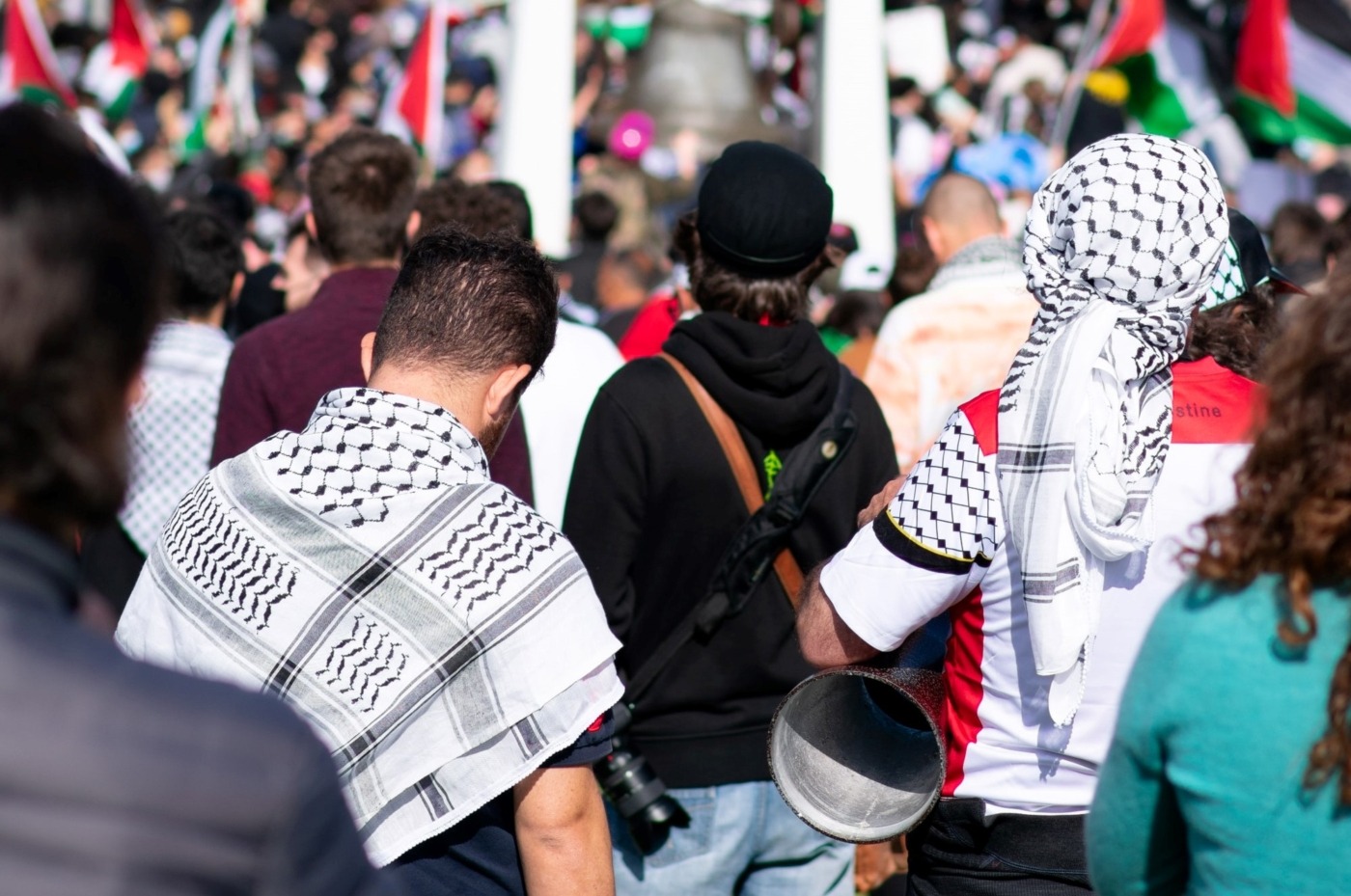Fashion history: the Palestinian Keffiyeh
As it often does, the Israel-Palestine conflict has again come to the forefront, with tensions raised over the Sheikh Jarrah neighbourhood leading to renewed violence and an eventual ceasefire. What was encouraging to see was protests in favour of the Free Palestine Movement in cities across the world, including a march here at Warwick.
If you have seen any of these or even attended, you may have seen people wearing a black and white chequered cloth alongside the Palestinian flag – called the keffiyeh. Some wear it around their shoulders, wrapped around their faces, and I have even seen members of the Irish Parliament wear a version of it as a face mask. So given its prevalence, I thought I’d explain a bit (although I should profess, I’m not entirely an expert).
It was only made in Palestine by the Herbawi family
The keffiyeh, which is also known as a ghutra or a shemagh in some Arab countries, is an Arabic headdress. It’s actually worn across the entire region, and usually, you’ll see men wearing a white one with a black band called an agal which keeps it in place. Having said that, you can wear a keffiyeh without an agal, or even tie it on your head – the latter is quite fashionable in the United Arab Emirates. You can also get red and white keffiyehs if you want a colour contrast.
However, the Palestinian keffiyeh is slightly different and is loaded with significance. For a start, the keffiyeh has a completely different pattern; it is a black and white fishnet pattern as opposed to small chequered squares. Up until recently, it was only made in Palestine by the Herbawi family, but considering its booming popularity, the Chinese entered the market. Regardless, its meaning for the Palestinian liberation movement is immense.
Originally worn by farmers during the Ottoman period, the Palestinian keffiyeh was first associated with liberation in the 1930s, during the Arab Revolt of 1936-39 (also known as the Great Revolt or the Great Palestinian Revolt), which is when Palestinian Arabs protested against the British Mandate in favour of nationalism. However, most people associate the keffiyeh’s significance for Palestinian nationalism with Yasser Arafat.
It is now common to see keffiyehs wrapped around the face
Yasser Arafat is perhaps the most famous Palestinian politician, having founded the political party Fatah – the largest of the groups that make up the Palestinian Liberation Organisation. He was also responsible for the 1993 Oslo Accords agreement (alongside Israeli Prime Minister Yitzhak Rabin). If you have seen pictures of Arafat, you will see him wearing the keffiyeh but he draped it over his shoulder to resemble the Palestinian territory. It became his personal style, to the point where he was rarely seen without it. No other leader has sought to imitate this, as one of Palestine’s most beloved sons, it seems untouchable now.
Having said that, the keffiyeh has been associated with other figures, just not in the same way. The other notable figure is Leila Khaled, who is a member of the Popular Front of the Liberation of Palestine, the second largest group in the PLO. She is commonly known for her role in aeroplane hijackings in 1969 and 1970 after which, photos circulated of her wearing a keffiyeh in the style of a hijab. Given its roots in Palestinian male culture, this was unusual. However, it is now common to see keffiyehs wrapped around the face as such.
Nowadays, the keffiyeh has soared in popularity – both as a fashion statement in the West and as a symbol of solidarity with the Palestinian liberation movement. I realise this has been a bit of a whistle-stop tour, but next time you see or are attending a protest, you will be able to recognise this simple item of clothing that has had meaning and significance since the very beginning of Palestinian nationalism. Free Palestine.

Comments